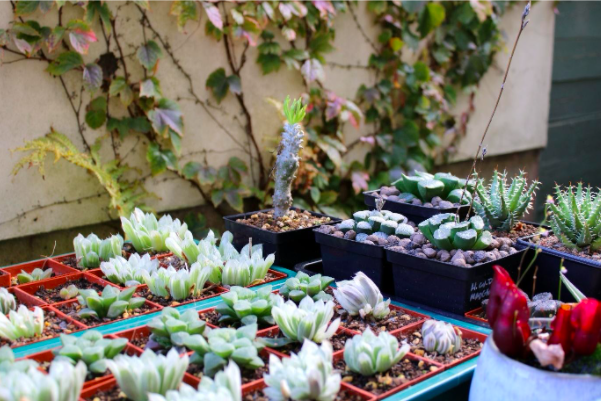We love hearing from unusual plant growers here in the UK. When we first set eyes on the weird and wonderful cacti and succulents that Sabaku sells, we were so intrigued to find out more about this business.
Sabaku is run by Seth, a brilliant plantsman with an intriguing background that has shaped his love of plants. Having grown up in the deserts of the American Southwest, he is a lover of desert-dwelling cacti and succulents. Seth has a wonderful appreciation of plants inspired by his time spent living in Japan, drawing upon its rich culture.
Seth, owner of Sabaku
Have you always been a plant lover, or where did your love of plants start from?
I think so, I mean, in terms of aesthetics in that ‘this or that plant is pretty’ most certainly. However, it wasn’t until I started collecting plants as teen that plant blindness really started falling away. My first real love was orchids—specifically small, epiphytic species that I mounted on cork bark and hung up in my bathroom as it was the only place where I could maintain any sort of relative humidity above 30%. I had grow lights strung all over, fans, aluminium foil on the walls, and something like 50-60 species of orchid hanging from every which way—it was a lot of fun.
What is it about cacti and succulents that you enjoy so much?
I grew up in the deserts of the American Southwest, so I think my feelings about desert plants are kind of complicated. To be honest, I really had no interest in them until well after I had settled in England—so, I would say homesickness plays a certain part.
The initial aim (as per my wife) was to bring ‘a few succulent plants into the house’, but similar to what I think a lot of hobbyists’ experience is that once I had a few in the house, I couldn’t stop. A few plants turned into a windowsill full of plants, which overflowed onto a shelf which of course needed grow lights, which in turn meant that any surface in the house could have plants on it really….now though, my personal collection has been mostly sold away to make room for what I grow and keep for sale.
What I found in keeping them though is that (in the cold, dark months especially) is that desert plants give me a feeling of warmth, light, and dryness. More abstractly, keeping plants that grow almost imperceptibly is an exercise in existential patience; a sort of mascot for enduring the unendurable.
Dorstenia foetida
What would be your top tip for caring for cacti & succulents?
I think my top tip for keeping plants in general is to take any advice with a large pinch of salt. People giving advice are likely not in the same climate and circumstances you are in and so the advice they give may not benefit you very much. As such, what’s best is to read all about your plants in habitat—wet seasons, dry seasons, climate, light, geology and soil composition and then try your best to recreate that in the space you have. Some plants are not too picky though and so are easier to care for, however if you pay attention to what is happening with them, they’ll reward good care with good growth.
Otherwise, my iron-clad advice for beginners is to avoid planting mixes with peat—it is good for plants that like to stay wet, but holds moisture for too long for desert plant purposes, and when it dries out (like we generally want between waterings) it becomes hydrophobic making it difficult to re-wet without giving it a really deep soak.
Copiapoa
Do you have an absolute favourite plant? If so, what is it and why?
Copiapoa cinerea—really, the whole genus of Copiapoa, but within that C. cinerea I find to be the most beautiful.
They are found only in the Atacama Desert in Chile, which is a place of superlatives. It is the driest desert on Earth, receiving less precipitation than even the polar deserts. The annual average rainfall is 15mm, but some areas receive only 1-3mm per year. Some weather stations have never registered rainfall. It is also the oldest desert at some 3 million years old, though there is some suggestion that parts of the Atacama have been arid for over 200 million years.
Adapting to live in this climate makes Copiapoa the most cactus-like of all cacti, and they deploy a whole range of survival strategies including production of a glaucous epidermal coating and desiccation—they will allow the tissues lower down the stem to die in order to maintain a living meristem which is also protected from the sun by thick woolly growth.
They also grow at an almost geological rate, making mature plants in habitat prime targets for poaching as it takes whole human lifetimes for individuals to reach a decent size. Most of my Copiapoa are about 5-10 years old—mature by any other plant’s standard, but still very small.
Copiapoa
Do you always search out the particularly unusual and rare?
I get a lot of pleasure out of the process of acquisition—the build-up of research, searching, locating, and then (the big dopamine rush) purchasing. As a function of that, I think I gravitate naturally toward rare species of desert plant.
Many plants in my collection started their lives from seeds germinated in the 1950s and I am now the third person to have these in my collection.
Can you describe your growing set-up? What would you like to improve if anything?
I don’t have a lot of space, so the space I do have has to be used creatively. Indoors, I keep a grow room with racks of grow lights for use germinating seeds and bringing more delicate species to marketable size. Outdoors, I have a couple of cold greenhouses occupying most of the footprint of my garden.
My ideal set up though (and something we are working slowly for) is for a heated permanent green house with extra polytunnels for cold-hardier species, plus an indoor grow room where I can germinate seeds over winter.
Seth fondly describes the irregularity of desert plants as ‘Ugly-beautiful’…
I have a strong preference for species described in nature (i.e. not hybridised by horticulturalists for market), but over-all, the plant has to meet some aesthetic criteria. I have lived in Japan as a University student, and the experience has informed my own aesthetic sensibilities.
Donald Keene, an academic and giant in the world of Japan studies writes that there are four principles of aesthetic appreciation unique to the Japanese and they are: suggestion, irregularity, simplicity, and perishability.
I talked a little about suggestion above in that desert plants speak to us about the desert without literally showing us desert vistas.
Irregularity is important, and my wife and I refer to it as ‘ugly-beautiful’—Keene talks about how things such as lack of symmetry, incompleteness, and a reasonable amount of damage all allow the observer to participate as opposed to admire. Tea bowls are often regarded as the purest expression of this—and if you have ever seen some of the sought-after pieces from sought-after potters you will know they are all lumpy and misshapen—these can fetch thousands of pounds in auction and are repaired with gold should cracks ever start appearing.
The other important concept is that of perishability. It is basically the idea that while cherry blossoms and plum blossoms are seasonal and aesthetic amalgams, cherry is highly preferred because its blooming time is so much shorter and conveys the idea of life’s impermanence so much better; things are beautiful because we know as observers that their existence is fleeting and so is our time here to experience them. I think desert plants accomplish this in a few ways but generally it is the way they show their age over all in a way that is easy to bring into the home (as opposed to an oak).
Finally, where is your ultimate planty destination to visit?
My feelings about visiting plants (and particularly desert plants) in situ are conflicting. From a conservation perspective, habitats are better off without us in them (the exception of course being when people are a part of their habitat, of which there are numerous examples). That said, visiting Copiapoa in habitat in the Atacama would be a real treat for me. Chile’s national poet Pablo Neruda wrote that ‘Anyone who hasn’t visited the habitat of Copiapoa is doomed. Not to know Copiapoa is a serious disease which in time will have terrible consequences. Something similar to a man who has never tasted peaches, he would quietly become sadder. And probably, little by little, would lose his hair.’
Atacama, Chile
Shop Sabaku and their unusual desert plants, potting mix and pots here.
You can also follow Sabaku on Instagram.
We’re excited to bring you another blog featuring Sabaku soon where Seth will be giving us tips on how to grow desert plants from seed.









